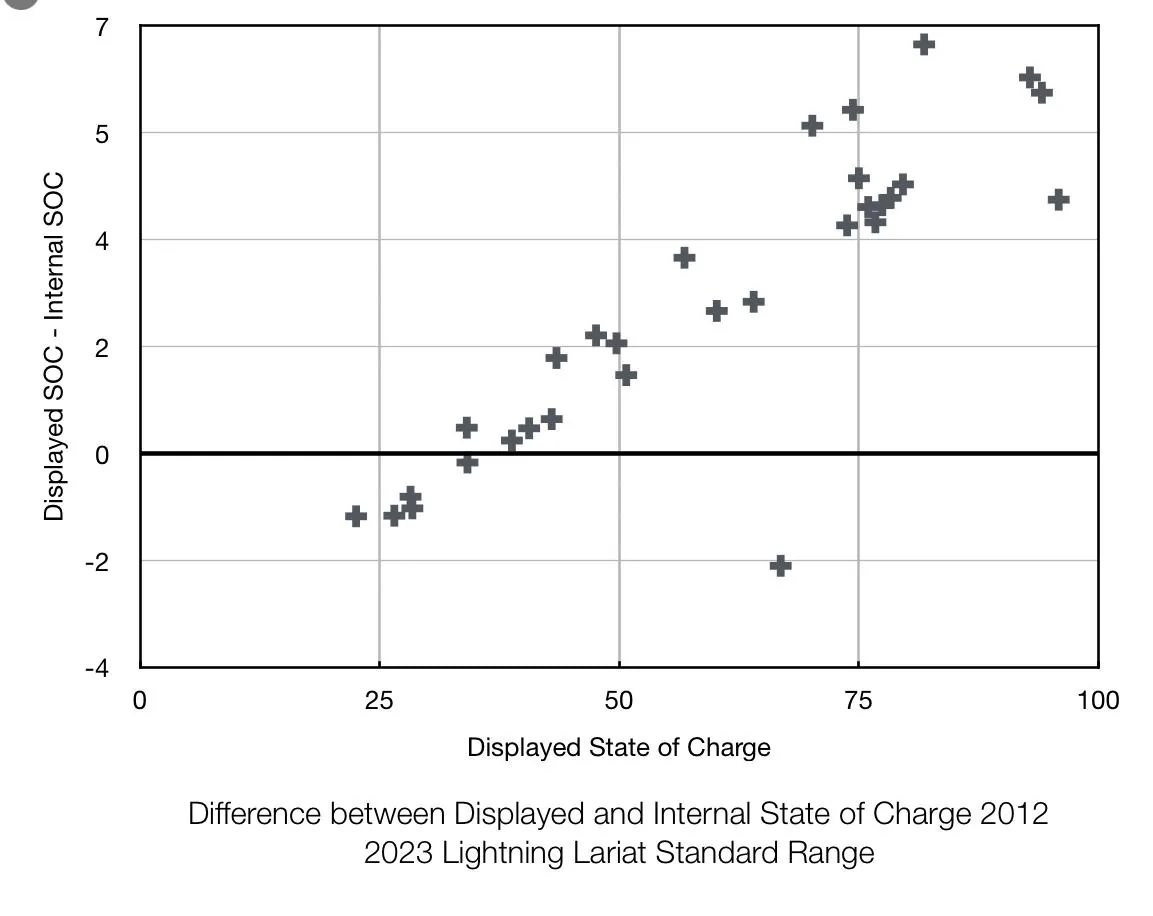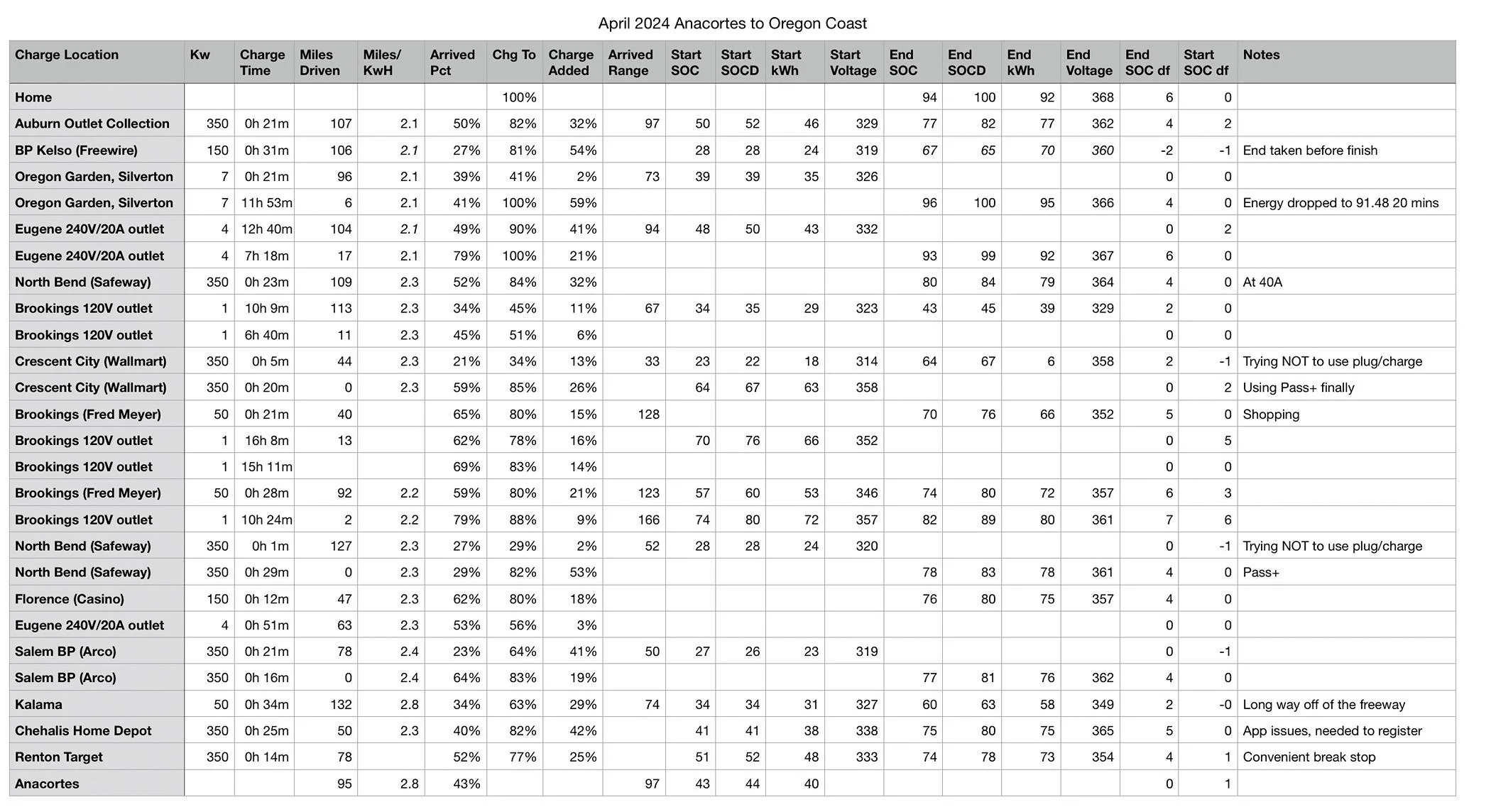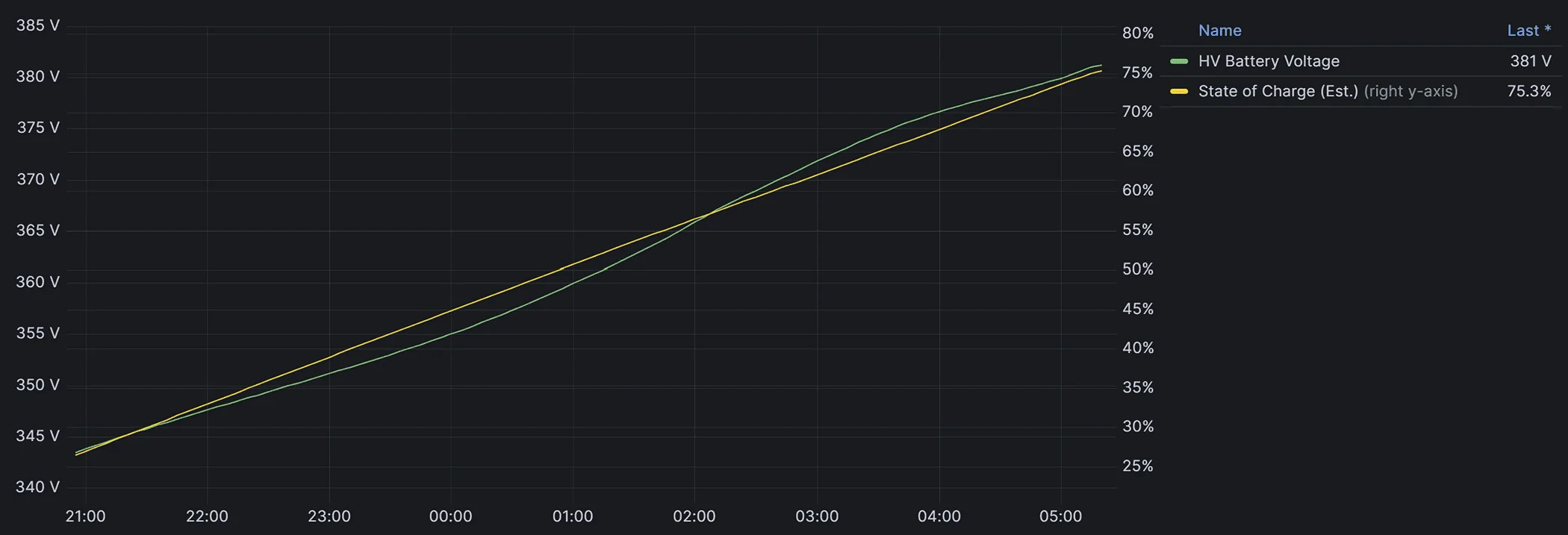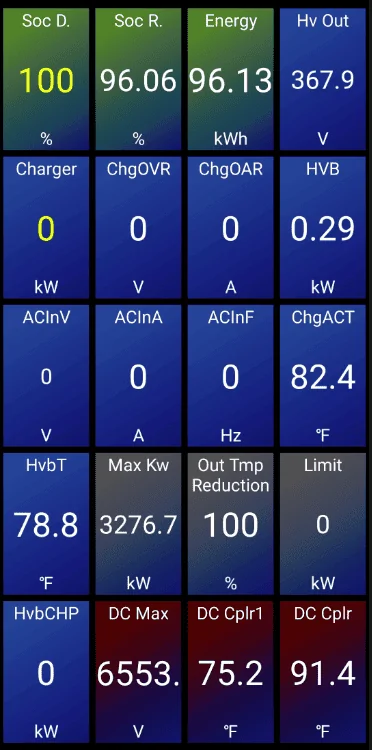Newton
Well-known member
- Thread starter
- #1
I have a 2023 Lightning Lariat Standard Range, which for the record we love. One issue has been that it has never (until recently, more on that later) shown that I have the full EPA range. I have owned EVs and other large battery banks for awhile, so I know about all of the disclaimers about the guess-o-meter, but have always based my behavior on the state of charge. That can be a problem as Kyle Conner's dad found out in the "race across America" when they ran out with some percentage of battery indicated.
I was interested enough in the issue to purchase the relatively inexpensive OBDlink MX+ and the Car Scanner (Pro) app on the iphone. What I discovered is that there is the displayed state of charge that we see in the "Charging" app, and an internal state of charge that we don't see anywhere but through these tools. They do not agree. My first assumption was that the internal state of charge was based on the real battery size, but the numbers did not work out. In fact the relationship between internal and external SOC was not linear.
We recently came back from a very enjoyable 1500 mile trip down the entire Washington and Oregon coasts, and one of my projects was to record the two states of charge. I tested at each recharge (usually before and after), and due to the nature of our trip I managed to record various charge levels. What I discovered was that the relationship is roughly that the displayed state of charge is over-reported when at higher states of charge, and equal to or slightly under the internal state of charge at lower states. I also discovered that the internal state of charge diminishes after charging while idle while the displayed state of charge remains constant. Additionally, I found that the truck seems to listen to the displayed SOC, for example shutting down the charge rate at 80% even though internally it doesn't think the charge is that high.
Anyway, this is the chart. Sometime in the future I will detail our trip with more information. I am interested in the relationship of voltage to the internal state of charge but have not done any work on it. So the mystery is not completely solved, this is just a heads up that things are more complex than you might imagine at first.
Note that the internal (non public) state of charge is still not the true state of charge, which for various technical reasons is imposible to know precisely without draining the battery. The main outlier that you see is apparently from a time when I got the data while still charging on a fast charger.

I was interested enough in the issue to purchase the relatively inexpensive OBDlink MX+ and the Car Scanner (Pro) app on the iphone. What I discovered is that there is the displayed state of charge that we see in the "Charging" app, and an internal state of charge that we don't see anywhere but through these tools. They do not agree. My first assumption was that the internal state of charge was based on the real battery size, but the numbers did not work out. In fact the relationship between internal and external SOC was not linear.
We recently came back from a very enjoyable 1500 mile trip down the entire Washington and Oregon coasts, and one of my projects was to record the two states of charge. I tested at each recharge (usually before and after), and due to the nature of our trip I managed to record various charge levels. What I discovered was that the relationship is roughly that the displayed state of charge is over-reported when at higher states of charge, and equal to or slightly under the internal state of charge at lower states. I also discovered that the internal state of charge diminishes after charging while idle while the displayed state of charge remains constant. Additionally, I found that the truck seems to listen to the displayed SOC, for example shutting down the charge rate at 80% even though internally it doesn't think the charge is that high.
Anyway, this is the chart. Sometime in the future I will detail our trip with more information. I am interested in the relationship of voltage to the internal state of charge but have not done any work on it. So the mystery is not completely solved, this is just a heads up that things are more complex than you might imagine at first.
Note that the internal (non public) state of charge is still not the true state of charge, which for various technical reasons is imposible to know precisely without draining the battery. The main outlier that you see is apparently from a time when I got the data while still charging on a fast charger.

Sponsored






